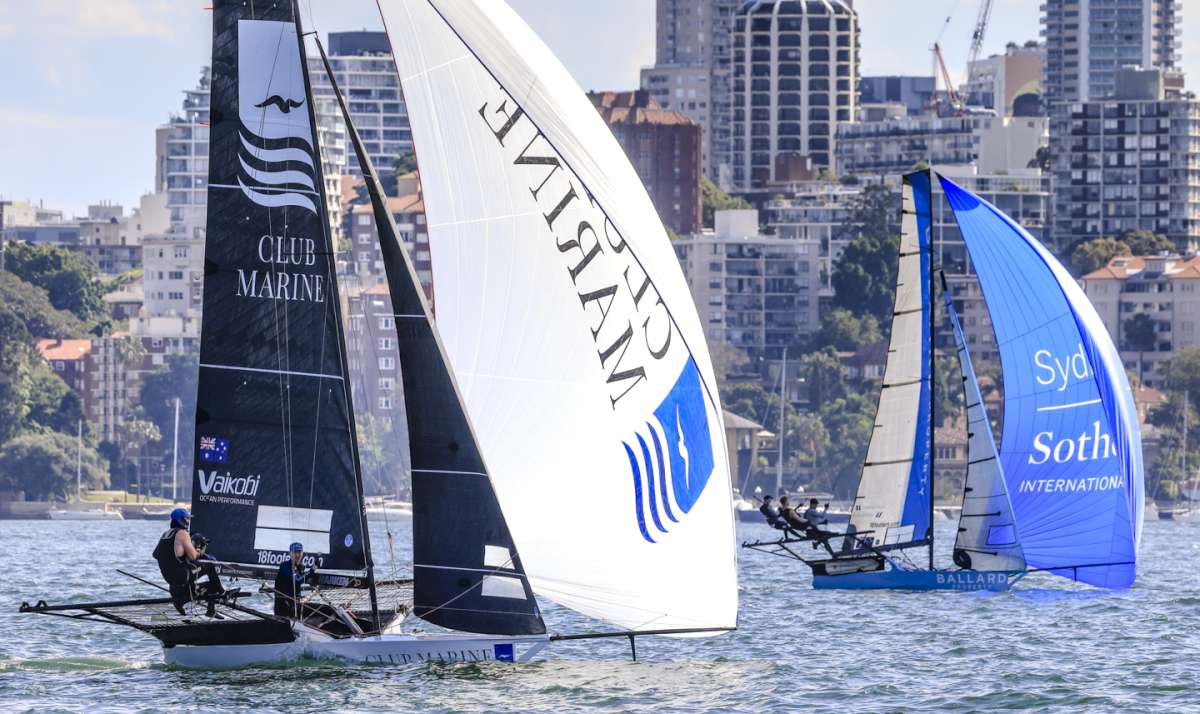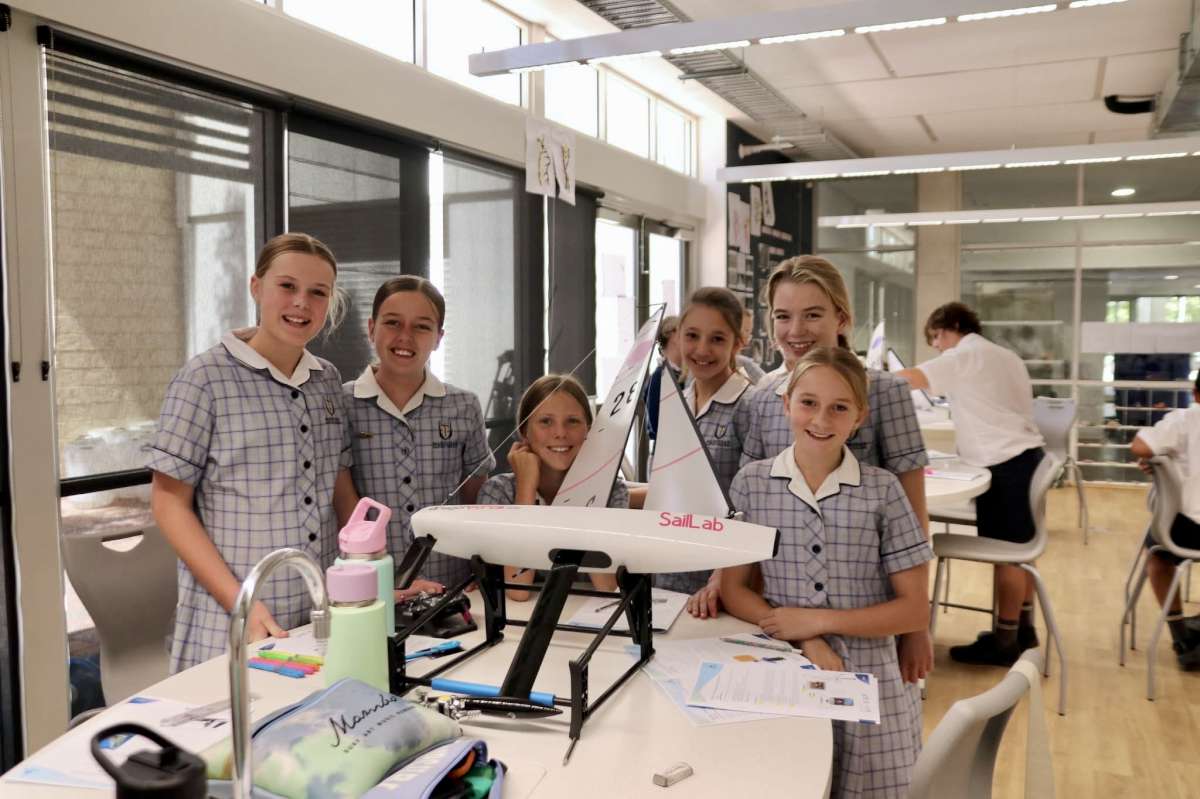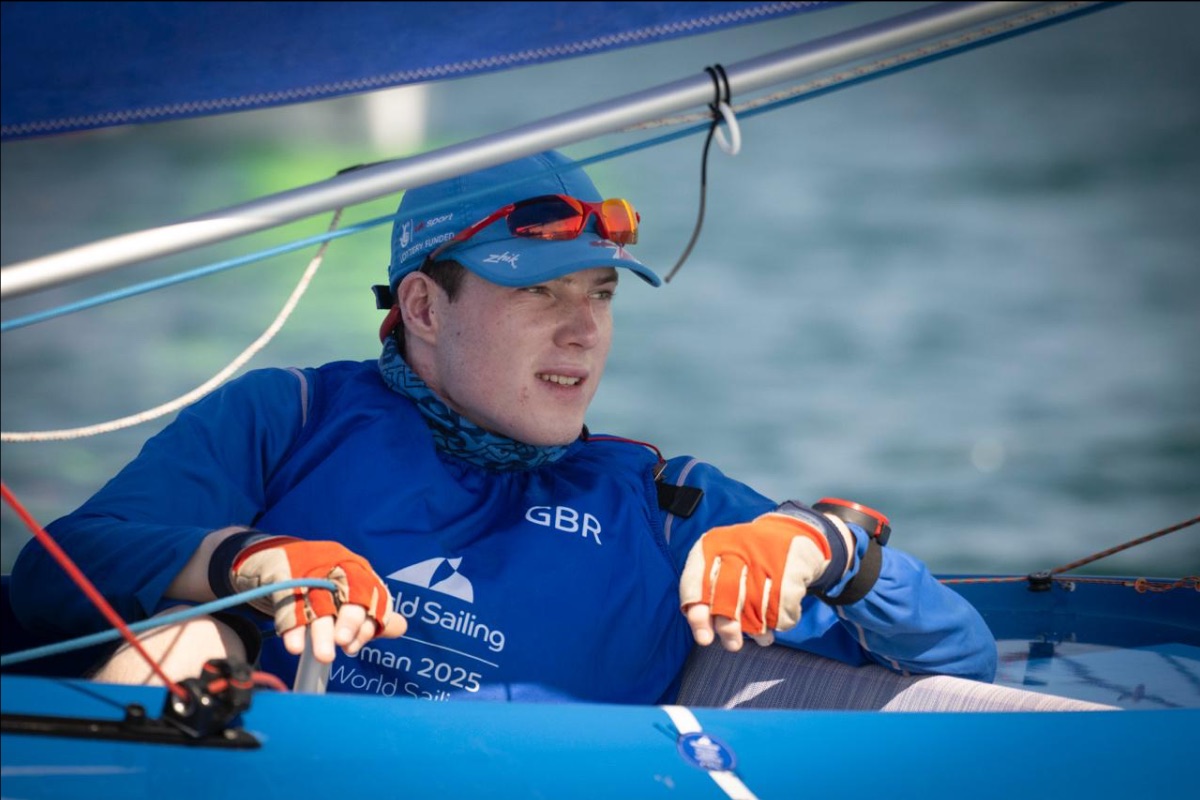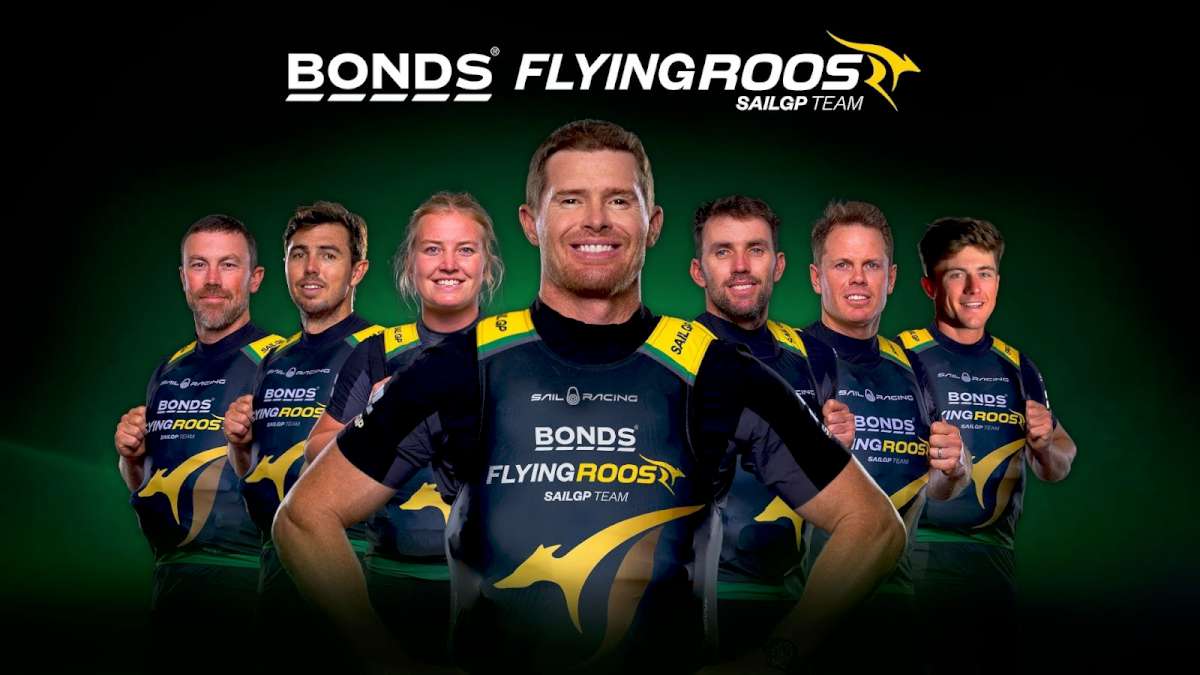The Furneaux Group is a jewel in Bass Strait.
It consists of some 52 isles, many offering safe, unspoilt and varied anchorages. We have spent several summers exploring these waters. For us the attraction is its remoteness and the fact that we often have pristine coves to ourselves.
So out of the many spots we have explored, here are our top ten. Three are on Flinders Island, the largest isle of the group and seven are located in the surrounding islets. Follow the map (page 22) anti-clockwise for locations
Killiecrankie Bay
On the northwest side of Flinders Island, Killiecrankie provides shelter from north-easterly through to southerly winds.
Although you can anchor along the beach, the best shelter is to be had by coming right into the small natural harbour formed by a rock shelf and Little Island, where the local cray fishing boats are safely moored. If you call Killiecrankie Enterprises on Channel 16 and talk to Margaret or Alan Wheatley, you may be able to use one of its spare moorings.
We have been known to hook up there to hide from a blow and treat ourselves to one of Alan’s crays.
The bay itself is a broad sweeping half-moon, dominated at one end by Mount Killiecrankie.
If you look carefully at the rock formation at the northern end of the beach, you will see the Old Man’s Head peacefully guarding the bay. At the southern end of the beach are barbecues.
But apart from the very beautiful scenery, the area is known for one particular thing: diamond fossicking. The Killiecrankie diamonds, a misnomer for gem quality topaz, can be found in the alluvial gravel of small creeks at both the northern and southern end of the bay.
They look like glassy, waterworn pebbles, usually translucent white, but sometimes yellow or even pale blue. Once cut they can pass for a diamond, well, nearly. We are told that crystals of 20 millimetre are abundant and larger ones have been found.
We have tried to make our fortune armed with shovel and sieve, but must admit to being paltry fossickers. Still, it’s fun to try!
Roydon Island
Off the northwest coast of Flinders Island, just south of imposing Cape Frankland, is the island of Roydon, dominated by a rocky pyramidal tor.
This is a stunning place with brilliant quartz sand making the water postcard blue. It offers good shelter on its eastern shores from winds coming from the southwest to the north, in two to five metres of water over sand and weed.
Being only about a mile from the Flinders shores, if the wind swings to the north east it is an easy shuffle to West Beach on Flinders Island.
The small lagoon-like cove is accessed by entering a channel running between Roydon and the North Pascoe Islands. The passage can be rowdy with strong currents when wind and tide work against each other, but once tucked in on the eastern side of the island it is beautifully calm.
Regular work is carried out on the island to eradicate the invasive boxthorn weed.
When anchored here we often go ashore for a walk right around the perimeter of the island. The rocks are colourful and the birdlife is abundant. There is also plenty of diving opportunities along the NE side of the island.
Marshall Bay
A third of the way down Flinders west coast is the very broad Marshall Bay, which is somewhat protected by the low lying islands of Prime Seal and the Pascoes.
This huge bay has 12 kilometres of beach stretching from Mt. Tanner at the northern end, to the hamlet of Emita at the southern end. Behind this endless beach are low, wind-swept, scrub covered sand dunes that extend some 2.5kms inland in places.
You can pull in and anchor off the beach anywhere and enjoy a quiet stroll or a bit of beachcombing. The further south you move along the bay, the more granite outcrops appear with orange lichen strip over the water line.
Some of these are of a remarkable size and distinctive shape. These include Castle Hill, a dramatic granite tor Wade affectionately calls “ET” (when you look at the picture, you can see why), plus Watermark Rock and Cave Rock, hollowed out by pounding waves.
As you move to the southern end of Marshall Bay, there are a series of neighbouring coves offering a choice of sheltered anchorages for slightly different wind directions.
The small cove of Allports Beach is lovely to anchor in if you can cope with being half surrounded by granite boulders.
With barbecue facilities ashore, you can throw the pick in three to five metres of water over sand and weed, with east-noreast to west-souwest shelter.
The next cove along is Emita, which offers bigger swinging room in NE to SW shelter though the holding is not quite as good.
At the southern end of the bay is Port Davies which gives you ENE to westerly shelter.
Bordering these beaches are meandering tracks taking you alternatively through low scrub land, patches of pigface or daisy bushes and sandy shores.
It is scenic, sometimes haunting and always those stunning colours: the aqua and sapphire of the ocean, the white sandy beaches, the orange and apricot lichen covered rocks.
If you have the time, from any of the beaches you can stroll to the nearby road and walk up to the Furneaux Museum.
It houses a fascinating collection of exhibits and relics about the sealers, the Straitsmen and gives a good feel for the history of the island.
Trousers Point
Tucked away at the south western end of Flinders Island, in the Strzelecki National Park, is Trousers Point. One of the most popular spots on the island with a designated camp site under the sheoaks.
It offers good shelter in NE through to SE winds.
The rocky granite headland of Trousers Point has the characteristic orange lichen strip. The turquoise water, the long white crescent beach and the towering peaks of the Strzelecki range overlooking the bay is breathtaking scenery.
Apart from the quiet stroll along the sandy shore for a bit of beach combing, there are a couple of nice walks to stretch your sea legs. One is an easy stroll around the Trousers Point headland to the north-west facing beach of Fotheringate Bay. This 90 minutes round trip takes you along the shore where the weather and marine erosion have carved out broad shore platforms with solution pans, caves and sea stacks.
Another very special and iconic walk, but much longer and quite demanding is the climb to the summit of Mt. Strzelecki. From the beach it is about three kilometres to the start of the track, then a five hour hike up and back.
It is a steep long climb from sea level to the 756m peaks. It is hard on the legs and the breathing, lots of grunting helps!
At the summit you are rewarded with impressive views towards Cape Barren Island and Mt. Munroe, the Vansittart shoals, the Franklin Sound, the Darling Range.
After all this physical challenge and a quick dip in the rather refreshing water of Trousers Point, you can use the free and very well maintained gas barbecue facilities with a view over the anchorage. There is only one problem: the size of the mozzies! As the locals put it “you get attacked by two of them and you are a gonner. “There is one to hold you down, the other to bite you!”
Be warned: full body armour and Aeroguard on.
For those who wonder about the name, Trousers Point, there are a couple of possible explanations. One story says the name commemorates the lucky escape by a certain Richard Burgess, without his trousers, from the wreck of the Sarah Ann Blanche. Another story assigns the name to the discovery of a box of trousers which had floated away and washed up on the beach from another wreck, that of the Cambridgeshire in 1875.
Badger Island
Badger Island is located opposite the western entrance of the Franklin Sound, separating Flinders Island from Cape Barren Island.
It is a low lying granite and limestone island, aboriginal owned and extensively grazed. The island was named after the vessel Badger which was wrecked here.
There are a couple of good anchorages in about three to five metres of water over sand, one on the northern shores, offering E to SW shelter and one on the eastern shore called Lucy’s Beach, offering SW to NNW shelter.
From Lucy’s Beach the view towards
the Franklin Sound and nearby Chappell
Island is to die for and this is one of our
favourite anchorages.
What is there not to like: the views are panoramic; the fishing is good, beachcombing excellent, walks ashore scenic. There is a derelict pier, an abandoned shack, a windmill, a small graveyard, all attesting to active pastoral life not so long ago.
A few nearby islets are clustered together and form part of the Badger Group, including the more notable Mount Chappell Island (feared for its numerous tiger snakes) and Goose Island where there is a tall lighthouse.
Thunder and Lightning Bay
Situated on the western shore of Cape Barren Island, the large bay of Thunder and Lightning offers great shelter from nor-norwest to south east winds in two to five metres of water over sand and weed.
You can anchor close to the beach at the northern end of the bay, or anywhere in the centre. The southern end has a few large rocks and shoals, so is best avoided.
A long sandy beach offers plenty of leg stretch and beachcombing opportunities and there is a fresh water creek at the southern end, not good enough for drinking but fine for replenishing camp shower bags.
Contrary to what the name might suggest, this is a quiet, peaceful and rather beautiful anchorage.
We wondered where the daunting name 'Thunder and lightning' came from. Is it referring to the foul weather that descends from the nearby hills?
Not so. We found out that the name comes from a descendant of Mannalargenna, chief of the aboriginal Ben Lomond Tribe. His fourth daughter was called Wobberertee, which translates as 'Thunderstorm, thunder and lightning'. Named after her, I bet it was not wise to argue with this woman!
Preservation Island
Lying south west of Cape Barren Island, Preservation is a low and undulating granite and calcarenite Island.
The Preservation Group also includes the Preservation islets, Rum Island and Night Island. It is an important historic site. The islands were named following the preservation of the Sydney Cove’s crew, a merchant ship which ran ashore there in February 1797. Neighbouring Rum Island was so named because much of the cargo of the Sydney Cove was rum and was stored there away from
the survivors!
Preservation Island offers good protection from light westerly conditions for shallow draft vessels. Horseshoe Bay offers shelter from SSE to NW on a weed and sand bottom in depths of two to three metres. However, in stronger conditions over 20 knots because the island is low lying and the bay quite shallow, a short chop can develop making this anchorage quite uncomfortable. It may require a quick exit.
We enjoy stopping at Preservation, there are lovely beaches to stroll along, plenty of scrambling around boulders and the birdlife is abundant.
Spike Cove
A small hop across the Armstrong Channel from Preservation and a little way down south along the northwest tip of Clarke Island is a very good anchorage.
Safe in all conditions except SW, Spike Cove is often frequented by fishing boats which tend to anchor out deep in the middle of the bay. Yachts can throw the pick in four to six metres close to shore, over a sandy bottom.
Spike Cove holds particular interest because of its unusual rock formations, reminiscent of Easter Island. Granite tors stand erect hence the name Spike Cove with massive boulders tinged with bright orange lichen, which all make for an interesting visit and great photography.
The island once was used by pastoralists.
It is not inhabited these days but since it is now managed by the Aboriginal Land Council, we do not recommend tramping around widely without permission.
Jamieson Bay
Situated at the south east end of Cape Barren Island, Jamieson has two main anchorages at either end of the bay.
In three to five metres over sand it offers shelter from W to NE, but anywhere along the beach is fine although it can be more affected by swell. You will often see one or two fishing
boats overnighting,
At either end of the very long white beach, as well as about half way down, are remarkable granite outcrops. Behind the beach are dunes and scrub, with the backdrop of Mt Kershaw overlooking the entire bay. On a clear day when you look south the north east coast of Tasmania is visible.
This is also a handy anchorage when contemplating the crossing of Bank Strait, a body of water separating Cape Barren and Clarke Islands from the northern coast of Tasmania. You can safely wait here for the right tide and weather conditions to get across those often rowdy waters.
The Babel Isles
The Babel Isles are located about half way along the east coast of Flinders Island. The largest island is Babel, but there are two others close by on the south eastern end, called Cat and Storehouse Islands. All are granite isles covered with low scrub, tussocks and sandy soil, pitted with millions of bird burrows.
It is home to the largest colony of Short Tailed Shearwaters in the world. There is an estimated three million pairs, or about 12 per cent of the whole population of this species. Babel Island also has a major colony of little penguins with some 20,000 pairs. When you get there, do not expect a quiet evening!
In fact, this is where the name of this group came from. It was the confusion of noises amongst these various birds which led Matthew Flinders to give the name Babel Isles to this small cluster.
Babel offers safe anchors, one on the NW side of the island called West Beach; a couple of others on the south, in Bull Cove and Cow Cove.
There is also a good day anchorage in the shallow waters tucked in between the isles of Babel, Cat and Storehouse.
When the wind is coming from the west or south west, the best place to be is off the beach at Sellars Point, near the sand spit bridge that joins Flinders and Babel at low tide.
Each anchorage offers different attributes to enjoy: snorkelling, diving, walks ashore.
There are of course many more appealing spots to discover in addition to those covered here. All you need is a little time, a taste for adventure and a desire to explore.
If you are like us, you will fall in love with this archipelago.
– Chris Danger and Wade Bishop























